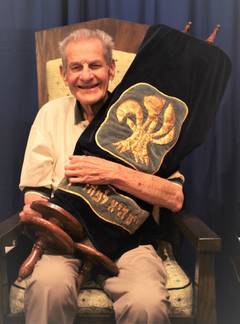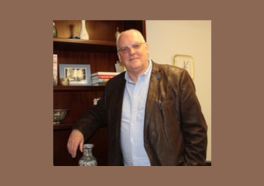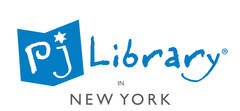- About Us
- Connect
- Learn
- Jewish Life
- Music
- Events
- Give
- Join Us
"windows" - Yom Kippur 5784/2023
09/27/2023 12:57:00 PM
| Author | |
| Date Added | |
| Automatically create summary | |
| Summary |
As Friday evening’s shadows darken the roads of Mount Airy, it is time to prepare for Shabbat. Temple Israel’s security guard checks the perimeter of our building, whose doors must always remain locked. The guard carries a gun, though you cannot tell. After making sure the building is secure, the guard stands by the door to let people in as they arrive for services.
Some of our Christian neighbors are surprised, even shocked, at the security precautions we must take. Others nod knowingly and sympathetically. They understand why we must be vigilant.
Ten years ago, we had no security guard. We left the doors unlocked during services. Now, with a guard, with security cameras, and with a building locked at all times, we feel safer.
But those who wish to harass Jews and undermine our communities can be clever. A new threat has emerged, this one targeting synagogues – like ours – who live stream our services.
Law enforcement calls the new threat “swatting.” It works like this. The perpetrator calls law enforcement and says that there is a bomb or an active shooter in a synagogue. Law enforcement responds by sending officers – and often a SWAT team – to the scene. The perpetrators can then watch the live stream to see the fear and confusion that they have sown.
Now we must address this new form of antisemitism. Now we must ask ourselves whether people who are not members here should be able to watch our services on the live stream. Now we must consider whether we should password-protect the calendar of Temple events on our website.
The overarching question is this: In a dangerous world, how safe can we be?
“How safe can we be?” This is not the first time our Temple Israel community has asked this question. Seventy-four years ago, when Temple Israel was only one year old, an organization called the Civil Rights Congress planned a fundraiser just north of Peekskill to benefit American communists arrested for their political beliefs. Paul Robeson, an African American singer, actor and activist was to sing at this fundraiser.
Opposition quickly mounted. Crowds blocked the road to the event and hurled hate-filled insults against Jews and African Americans, physically attacking concert-goers. During the riot, protesters overturned cars and pelted them with stones. Someone burned a small cross on a hillside. Organizers had to cancel the concert.
Determined not to let the rioters win, the organizers rescheduled the event for eight days later. Fifteen thousand people came to the rescheduled concert, held without incident. But on the way out, crowds again attacked the concertgoers. Just as before, they hurled insults against Jews and African Americans. In writing about these riots, a reporter for Commentary magazine noted, “A new American myth is being established in which Negroes, Jews and Communists are arrayed against the rest of the country.” Remember: this was the McCarthy era, a time in which many Americans had their lives ruined because of suspicions that they were communists.
The Jewish communities of Peekskill, Croton and Putnam responded to this threat in different ways. They held meetings to discuss whether to respond with strongly worded statements against American communism or ignore this new accusation and hope that it would fade. Some of the Jewish summer colonies in our area employed guards for protection. Young people collected stones that they could use as weapons, just in case.
There was a reason the local Jewish community was on edge. What became known as the “Robeson riots” took place just four years after the end of World War II, before we had a single word to describe the atrocities of the Nazis and the murder of the six million. They must have wondered whether the Robeson riots in our neighborhood signaled a resurgence of this threat.
The threat we feel today is nothing new. Antisemitism is a long-enduring hatred. We all know about the other events that have caused pain and terror in Jewish communities. We know them all too well.
The question is, how do we respond? Our sages, who themselves lived in a dangerous world, offer wisdom that can guide us today.
The early rabbis included a curious teaching in the Talmud at the end of a long discussion about prayer. Quoting his teacher, Rabbi Yoḥanan, Rabbi Ḥiyya bar Abba taught: “One can only pray in a house with windows.” Later generations elaborated on this statement, saying that Jewish communities must construct their synagogues with at least twelve windows.
Some have connected this teaching with the idea that when we gather in prayer, we must be mindful of the outside world. We should not isolate ourselves from those outside our community, but must engage with life outside of our walls. Looking out the windows to see the life outside reminds us that we are part of this larger world.
Windows work two ways. We look through the windows to see outside, and others can look through the windows to see inside. It would certainly be safer to have no windows at all. It is safer to hunker down and hide from the world. If we wanted to build our synagogue as a fortress, we would have no windows at all.
To counter this new threat of “swatting,” some might say that we should not live stream our services for non-members either. Live streaming functions as a one-way window. Others can look through this technological window from across the world, to see our sanctuary in Croton.
This window is critically important. When others watch our services on the live stream, they can see: we stand for goodness. We stand for justice. We stand for an ancient ethical tradition that speaks to us even in this generation. If others cannot see us, they can make up lies about us. How can we be a “light to the nations” if no can see who we really are?
I remember the Friday evening Shabbat services held here just six days after the horrific shooting in the Tree of Life synagogue in Pittsburgh. I did not know what to expect that evening. We hired off-duty police officers to be here that night, to reassure those who wanted to attend. Still, I was not sure if people would stay away. Fear is a powerful deterrent.
People did not stay away. They flowed through the doors, hugging each other, some with tears in their eyes. They thanked the police officers for being there with us. People filled our sanctuary, filled our oneg room, stood in the back and crowded out the door.
Our Jewish community came – and so did our neighbors. Christian, Muslim, atheists and agnostics – all came through our open doors to be here with us. They did not want us to be alone
Our neighbors did this because our community has “windows.” Our neighbors know that we look outside of our synagogue walls, and we care about others in the larger world. We let others look inside our community and see who we are and what we stand for. After Pittsburgh, our neighbors showed up to stand with us. On that dark evening, the people in this sanctuary filled the room with light. In the presence of that light, I felt no fear.
In the years since Pittsburgh, we have not let threats of danger close us down. We will remain vigilant with our security measures, as we must. But we must also recognize that great strength lies in the relationships we have formed with our broader community, relationships formed because we have opened our hearts and our hands to others and they, seeing who we really are, have opened their hearts and their hands to us.
To be a Jew in the world is to be strong and to be vulnerable, to recognize our precarious position and yet persevere, continuing to live according to our highest values. Yom Kippur teaches that for each of us, life is precarious. And at the same time, we possess a deep inner strength, a strength that enabled us to persevere for millennia, a strength that can carry us into our future with confidence and with hope.
Thu, April 24 2025
26 Nisan 5785
Temple israel Happenings
-
Thursday ,
AprApril 24 , 2025 County-Wide Yom HaShoah Commemoration
County-Wide Yom HaShoah Commemoration
Thursday, Apr 24th 12:00pm to 1:00pm
County-Wide Yom HaShoah Commemoration at the Garden of Remembrance, 119 Martine Avenue in White Plains. Temple Israel's rescued Holocaust Torah scroll will be part of the procession of scrolls from Westchester county, and Cantor Hayley Kobilinsky will participate in the program. -
Tuesday ,
AprApril 29 , 2025 Sisterhood Book Group
Sisterhood Book Group
Tuesday, Apr 29th 6:00pm to 8:30pm
NEW DATE! We will be discussing the book "The Frederick Sisters Are Living the Dream" by Jeannie Zusy in person at a congregants' home. The author will be joining us for the discussion. We will have a Pot Luck Dinner to start -
Wednesday ,
AprApril 30 , 2025 Holocaust Education Today: Challenges and Limits by Dr. Werner Steger
Holocaust Education Today: Challenges and Limits by Dr. Werner Steger
Wednesday, Apr 30th 6:00pm to 7:30pm
Dr. Steger serves as the endowed chair for the Greenspan-Handel Trust for Holocaust and Genocide Studies. -
Saturday ,
MayMay 3 , 2025 Midnight Run
Midnight Run
Shabbat, May 3rd 1:00pm to 4:00pm
Volunteers needed. The Midnight Run is a volunteer organization whose goal is to come together as a community in order to feed the homeless of New York City. They coordinate more than 1,000 relief missions per year with volunteers from churches, synagogues, schools and other civic groups to deliver food, clothing, blankets and personal care items to the homeless poor on the streets of New York City.
Events
Today's Calendar
| Yom HaShoah |
: 12:00pm |
: 7:00pm |
Friday Night
: 7:00pm |
Shabbat Day
: 9:30am |
Upcoming Programs & Events
Apr 24 |
Apr 24 |
Apr 29 |
Apr 30 |
May 2 |
This week's Torah portion is Parashat Sh'mini
| Shabbat, Apr 26 |
Yom HaShoah
| Thursday, Apr 24 |




